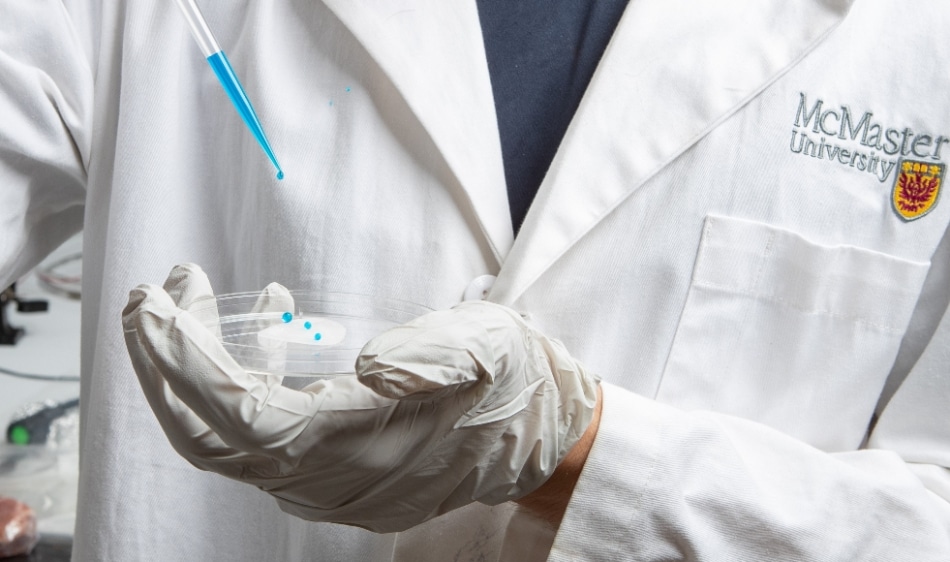Dec 16 2019
A research team from McMaster University has created a self-cleaning surface with the ability to repel bacteria of all kinds. This prevents antibiotic-resistant superbugs and other harmful bacteria from being transferred from environments such as hospitals and kitchens.

Image Credit: Georgia Kirkos.
It is possible to shrink-wrap the innovative plastic surface—a treated form of traditional transparent wrap—onto railings, door handles, IV stands, and other surfaces that can act as magnets for bacteria such as Clostridium difficile and MRSA.
In addition, the treated material is best suited for food packaging, where it could prevent the accidental transfer of bacteria like Salmonella, Escherichia coli, and listeria from raw meat, chicken, and other foods, as reported in a paper recently published in the ACS Nano journal.
In collaboration with colleagues from McMaster’s Institute for Infectious Disease Research and the McMaster-based Canadian Centre for Electron Microscopy, engineers Leyla Soleymani and Tohid Didar led the study.
Co-authors of Soleymani and Didar in the study include Sara M. Imani, Roderick Maclachlan, Kenneth Rachwalski, Yuting Chan, Bryan Lee, Mark McInnes, Kathryn Grandfield, and Eric D. Brown.
The new surface, which is based on the water-repellent lotus leaf, works by using a combination of nanoscale surface engineering and chemistry. Textured with microscopic wrinkles, the surface can eliminate all external molecules. For instance, a drop of water or blood just bounces away upon landing on the surface. The same holds true for bacteria.
We’re structurally tuning that plastic. This material gives us something that can be applied to all kinds of things.
Leyla Soleymani, Engineering Physicist, McMaster University
In addition, the surface is chemically treated to further improve its repellent properties, leading to a barrier that is durable, flexible, and less expensive to reproduce.
We can see this technology being used in all kinds of institutional and domestic settings. As the world confronts the crisis of anti-microbial resistance, we hope it will become an important part of the anti-bacterial toolbox.
Tohid Didar, Engineer, McMaster University
The material was tested by the researchers using two of the most distressing types of antibiotic-resistant bacteria—Pseudomonas and MRSA—in collaboration with Brown and his colleagues at McMaster’s Institute for Infectious Disease Research.
Grandfield assisted the researchers to confirm the effectiveness of the surface by taking electron microscope images revealing that almost no bacteria could transfer to the new surface.
The research team hopes to work with a commercial partner to develop commercial applications for the new plastic wrap.